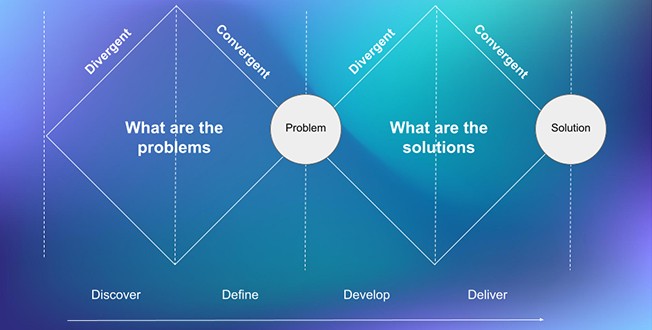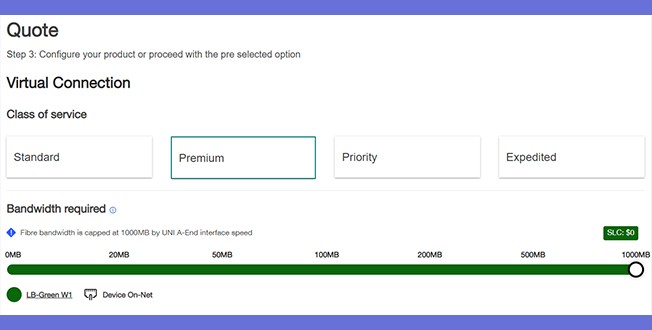How we transformed fibre quoting for a better pre-sales experience

One of the recurrent themes we hear from customers is about complexity, and the need to simplify our processes and systems. Nowhere was this more apparent than in the pre-sales journey. Customers typically put together multiple quotes for each opportunity on a ‘good, better, best’ basis. If customers have to use disparate and unintuitive systems for such quotes and orders, it can be a frustrating and time-consuming experience for them and their end users.
In March 2021, we began a Digital Customer Experience (DCX) program to improve the overall customer experience when quoting and ordering data products. We aimed to deliver more consistent, personalised experiences aligned with current user expectations rather than the traditional B2B telco purchasing experience.
Our DCX team engaged the Telstra Wholesale account managers, service managers, product managers, and solution engineers who underpin our pre-sale process, understand the customer journey and identify pressing pain points. We consulted with customers who use our systems to test our assumptions and build an accurate picture of the current customer journey. We analysed their feedback and developed a vision for a customer experience built around simple, fast, connected tools.
In August 2022, we released a new quoting and ordering journey for Ethernet Access. It is the first step in our journey towards creating a marketplace for our fibre products, providing certainty about what’s on offer and making it easier for you to choose a solution that suits you and your customer.
To make this happen, we embarked on a complex and challenging journey to change our digital systems from the ground up. We had to ensure legacy systems were handled proactively while not impacting customer service levels. We took this opportunity to transform our processes and gain valuable insights. Here's what we learned.
Think big, start small
The most important thing was to deliver value as soon as possible and then continuously improve. Our approach was to start small by identifying the most important features to our customers. We then iterated on those features based on customer feedback. We made sure that we could scale up quickly by building our software in a way that allowed us to expand to different markets and use cases rapidly.
Embrace agile ways of working
One of the key benefits of the Agile project management methodology is that it allows us to adapt quickly to changing requirements and constraints. In a waterfall approach, you must go through a lengthy change management process before taking action.
Our methods enabled us to pivot and adapt to change as we received feedback from our customers. Such an approach might not fit with funding allocation processes based on traditional milestones, making it challenging to get buy-in at first. We had to be clear on our vision and articulate each problem we wanted to solve for the user. These solutions became our milestones, making it easier to obtain further funding. We began building out more detailed solutions and implementing them through a series of sprints, enabling us to deliver value early and often.
Employ human-centred design
At Telstra, we use the CARE customer journey framework, covering people, processes and technology. We employed this approach to explore user needs and motivations across each step of the ‘choose, act, resolve and engage’ journey, and how they could be translated into design concepts. We then prototyped, tested and iterated on these ideas to develop a product that met the needs of our end user.
One of the key Human Centred Design techniques we used was the double-diamond approach. The double diamond approach is a framework for understanding customers and their challenges. It seeks to maximise the value of new ideas by using two types of thinking: divergent and convergent. Divergent thinking is when we keep an open mind and consider anything and everything. Convergent thinking is when we bring back focus on one or two key problems to solve.

For example, customers wanted bandwidth and costs front and centre. However, there were a total of 25 different site feasibility scenarios that affected available bandwidth and cost considerations. We started by approaching this design challenge broadly, splitting up into smaller teams to workshop ideas. From there, we narrowed our focus, gathering product rules from a range of downstream teams to ensure we reflected the crucial information while achieving our desired outcome

Create safe spaces for testing and deployment
You need to be able to test changes without impacting users and ensure that your team is equipped with all of the necessary resources required to implement the change successfully. This can be particularly challenging in telco environments where many different teams create and maintain software. Open communication between feature developer teams helped the team plan their testing and deployment times in the sprint.
Identify the key features of legacy systems
We asked ourselves how we could bring together the legacy elements of our system so that they worked well with each other and allow us to pivot when necessary. We started by unpacking the spaghetti of systems and identifying the key elements of functionality. This allowed us to better understand how each worked and determine what was necessary to build for our first release.
Invest in team-building
Start early to build successful relationships between your business team and the development unit. The earlier collaboration begins, the greater the team’s understanding of the problem and the user will be, and the less chance there is for conflict down the road due to miscommunication.
Remember the user
We also realised early on that it was essential to have a role dedicated to representing the user experience (UX) of the customer base. It’s easy to think that everyone (or anyone) in the team can oversee UX, but without someone solely focused on data and customer liaison, it is easy for assumptions to cloud the actual user experience and impact the solution.
Align on approach and goals
Achieving alignment with a team that hasn’t adopted Agile can be challenging. Teams must set common goals to work together effectively. Everyone should understand how their goals relate to each other and how they contribute to reaching the organisation’s goal. The key to success is to focus on outcomes that achieve a shared goal.
Where are we heading?
Our goal is to create better ways of doing business for you and your customers. We want to help you achieve your goals in the most cost-effective way possible, creating value for all stakeholders. We’ll continue to evolve and enhance our digital customer experience because we know that improving how we serve you is crucial to your future success.
